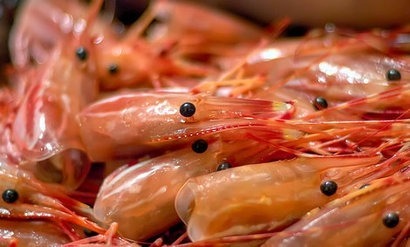
The cells are made from chitin and chitosan which are found in the shells of shrimps and other crustaceans and are significantly cheaper to produce than expensive metals, such as ruthenium, which are currently used for making nano-structured solar cells.
The efficiency of solar cells made with this material is currently fairly low, but if it can be improved the cells could be included in everything from wearable chargers for tablets, phones and smartwatches to semi-transparent films over windows.
Researchers from QMUL’s School of Engineering and Materials Science used a process known as hydrothermal carbonization to create the carbon quantum dots (CQDs) from the chemicals found in crustacean shells, which are widely available and cheap. The researchers then coated standard zinc oxide nanorods with the CQDs to make the solar cells.
“This could be a great new way to make these versatile, quick and easy to produce solar cells from readily available, sustainable materials” said Dr Joe Briscoe, one of the researchers on the project. “Once we’ve improved their efficiency they could be used anywhere that solar cells are used now, particularly to charge the kinds of devices people carry with them every day.”
Professor Magdalena Titirici, Professor of Sustainable Materials Technology at QMUL, added that the new techniques mean that it is now possible to produce new materials from organic by-products that are already easily available. These sustainable materials can be both high-tech and low-cost. Biomass, such as algae, can also be used to make supercapacitors that can store power in consumer electronics, in defibrillators and can be used for energy recovery in vehicles.
For additional information:

